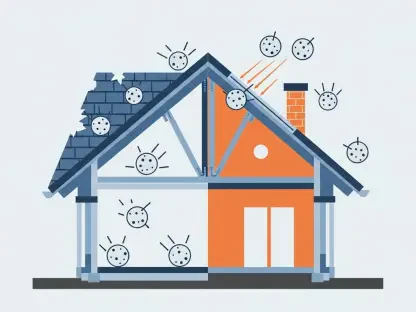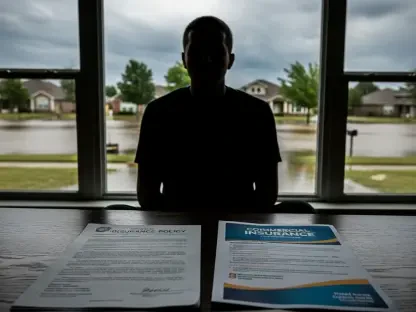In today’s rapidly shifting insurance landscape, maintaining a strong grasp on the dynamics of underwriting and claims expertise is crucial. Simon Glairy, an authority in the insurance and Insurtech sectors, provides us insights into the strategies and vision of a new CEO tackling these challenges head-on. In our interview, Simon delves into topics like enhancing digitalization, addressing protection gaps, and fostering inclusivity within the insurance community.
What motivated you to take on the role of CEO at the IUA?
Taking the helm of the IUA presents a unique opportunity to make a significant impact on the insurance industry, particularly in streamlining operations and strengthening our market presence. With a history of innovation and collaboration, the IUA stands at the forefront of industry change, which excites me as I work to further our mission.
How do you plan to build on the existing strategic priorities of market modernization, legal and regulatory support, and underwriting and claims intelligence?
I see these priorities as the foundation for our future growth. By integrating modern technologies, we can enhance our operational efficiency while maintaining robust legal and regulatory frameworks. Our focus on underwriting and claims will be expanded by incorporating advanced data analytics to drive intelligent decision-making across these verticals.
Can you elaborate on your approach to enhancing digitalization and operational efficiency within the IUA?
Digital transformation is essential for agility and responsiveness. I plan to leverage cutting-edge digital tools to streamline processes, making operations more efficient and data-driven. This, in turn, will empower our teams and members to adapt more quickly to changes in the market.
Why is underwriting and claims expertise a key focus for you, and how do you plan to prioritize it in IUA’s operations?
Underwriting and claims are at the core of what we do. By prioritizing initiatives that promote technical excellence, we can ensure the highest standards of service. This involves investing in continuous learning and development programs to keep our members at the forefront of industry expertise.
What strategies will you implement to engage members in promoting technical excellence in underwriting and claims issues?
Engagement is about creating meaningful interactions and opportunities for collaboration. By fostering open dialogue and working closely with our members, we can develop targeted workshops and seminars that address specific challenges and innovations in underwriting and claims.
How do you intend to develop the IUA’s research function to address risk more holistically?
Our research efforts will take a comprehensive approach, looking beyond individual risks to understand broader systemic impacts. This holistic perspective will help us identify trends and challenges early, enabling proactive risk management strategies for our members.
Can you explain your approach to reassessing emerging and systemic risks within the insurance market?
Emerging risks require a flexible and dynamic approach. By fostering a collaborative atmosphere, we can encourage new ideas and perspectives that will help us reassess these risks and devise innovative solutions tailored to the evolving needs of the insurance market.
What steps will you take to adopt a more integrated approach to risk assessment, as opposed to a siloed view?
Adopting an integrated approach means breaking down barriers between departments and fostering cross-functional collaboration. By doing so, we will ensure that we have a comprehensive understanding of risks and can implement more effective and unified risk assessment frameworks.
How do you plan to address the protection gaps that are emerging for insurance buyers?
Addressing protection gaps involves understanding the specific needs of insurance buyers. By enhancing our data analytics capabilities, we can identify these gaps more accurately and tailor our products and solutions to meet the evolving demands of our clients.
In what ways will you promote greater collaboration and inclusivity among market professionals?
Inclusivity is about broadening the conversation. We plan to create platforms and forums that facilitate dialogue between diverse groups of professionals, including up-and-coming talent in the industry, to ensure that a wide range of perspectives are considered.
How do you plan to bring more voices, especially from the next generation, into the IUA’s processes?
Engaging the next generation is crucial for sustainability. We will implement mentorship and internship programs designed to bring fresh insights to the industry while providing young professionals with hands-on experience and a voice in shaping our future direction.
What new methods are you considering to expand member engagement beyond traditional committee structures?
We aim to move beyond traditional methods by integrating digital communication tools and creating more interactive forums. This will allow us to accommodate the preferences of a wider range of members, fostering a more dynamic and inclusive community.
With over 1,000 committee participants, how do you plan to add value and enhance interactions for the wider membership?
Adding value involves personalized engagement and resource sharing. By tailoring our communications and offerings to the specific needs and interests of our members, we can make their participation more meaningful and impactful.
How do you intend to shift the internal focus of the IUA from just recording meetings to driving meaningful outcomes?
To drive outcomes, we must prioritize actionable goals over simply documenting discussions. This means establishing clear objectives for each meeting and following up with concrete action plans that ensure the implementation of ideas generated during these discussions.
What specific impacts do you hope the IUA will deliver under your leadership?
Under my leadership, I envision the IUA setting new industry standards for excellence in risk management and operational efficiency. I hope to see us deliver not only on our strategic priorities but also inspire broader industry changes that lead to a more resilient and innovative insurance landscape.
Can you discuss any challenges you anticipate in implementing these changes, and how you plan to overcome them?
Change is never easy, especially on a large scale. Anticipating resistance, we will focus on transparent communication and emphasizing the benefits of these changes. By maintaining an open dialogue with stakeholders, we can address concerns and ensure a smoother transition.
Do you have any advice for our readers?
Stay adaptable and open to change. The insurance industry is evolving rapidly with advances in technology and shifting consumer expectations. Embrace continuous learning, and be willing to innovate and collaborate to stay ahead in this dynamic environment.









